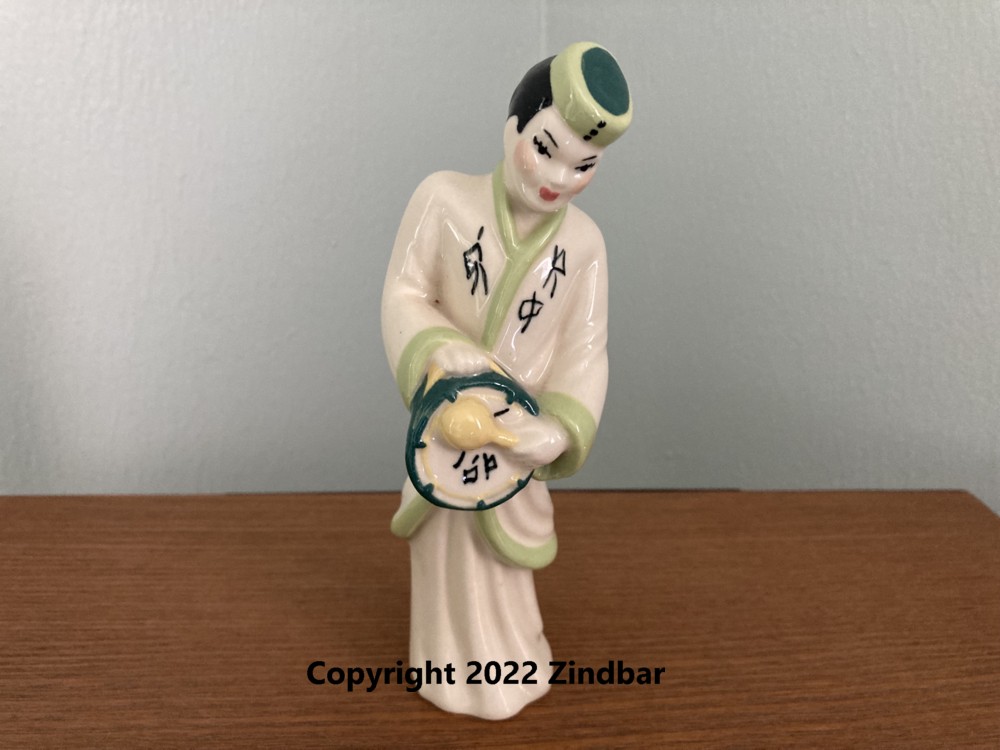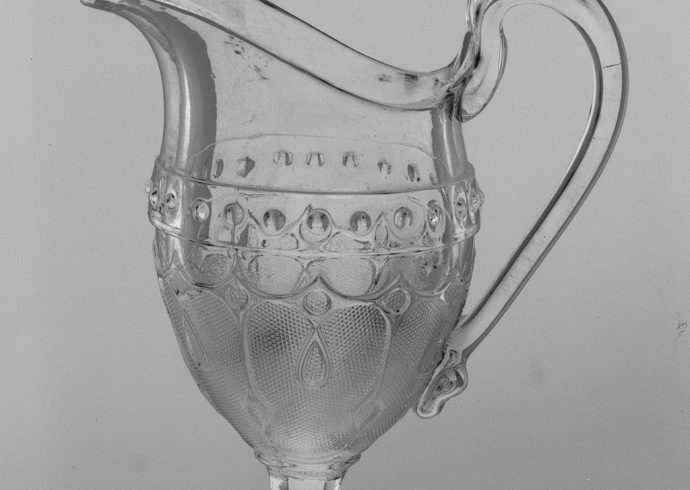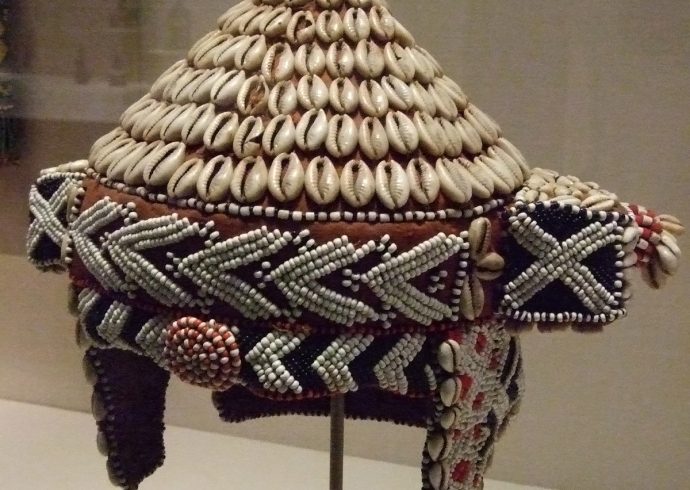
Chances are that if you lived during the 1960’s through 1980’s, someone in your family owned at least one ceramic figurine stamped “Ceramic Arts Studio” on the bottom. The figurine may have appeared to come from an old fairy poem, perhaps one composed by Rose Fyleman, or a Mother Goose poem. Perhaps it was a figurine of Asian origin. Regardless of the curiosity behind the decorative ceramic piece, chances are it was designed by Betty Harrington, the main designer of such objects, at Ceramic Arts Studio.
Betty Ina Martin was born in 1913 in Madison, Wisconsin. She was fond of art and often dreamed of being an artist but was unable to afford any formal training outside of an art course taken during her freshman year of high school. Not unlike a modern dream board, Betty maintained a scrapbook as a child, filling it with pictures, snippets of writing, and anything which might encourage artistic creativity. It was this scrapbook which helped inspire Betty to further a career in the arts, as well as being a lifelong reference during her employment years with Ceramic Arts Studio.
By 1933, Betty married Albert W Harrington, and had a daughter. A pile of bluish clay, the result of digging for a local well, proved to benefit Betty and her artistic aspirations. Moreover, Wisconsin was rich in natural clay, particularly lacustrine clay, or clay which has formed near a lake. The blue tint of the clay was due to the presence of carbonaceous matter and was obviously perfect for molding. It was the rich deposits of clay in Wisconsin that gave birth to the pottery industry in the state, and an extensive study on Wisconsin clay titled The Clays and Clay Industries of Wisconsin was written by Ernest Robertson Buckley, Ph. D. and published by the Wisconsin Geological and Natural History Survey in 1901. With this blue clay, Betty made a figurine from clay and decided to have it glazed and fired in a kiln in 1942. Having neither, she went to the Ceramic Arts Studio in her hometown and asked if she could have that specific task done for her.
Ceramic Arts Studio originally started as a pottery manufacturer, but eventually branched out to creating ceramic figurines, a common form of household décor during the 1940’s and 1950’s. Reuben Sand was the business mind behind Ceramic Arts Studio, while Lawrence Rabbitt was a potter by trade. Rabbitt was a graduate of the University of Wisconsin, along with Sand. Together the two men started the company in 1940 in Madison, but Rabbitt left in 1942. Now that Betty’s hand molded figurine of a woman with a section for burning incense was properly finished, Sand was pleased with the outcome, and having an idea about Betty Harrington’s natural talent, offered her a job with the company as a ceramics designer. Instantly accepting the job with the fledgling company, Betty knew she finally had the chance to shine using her artistic skills and proved to be an endless source of ideas for decorative household ceramics, including everyday useful items such as vases, bookends, candle holder, lamps, salt and pepper sets.
Ceramic Arts Studio employed around 100 people, and according to The Wisconsin State Journal dated August 18, 1996, manufactured between 250,000 to 500,000 pieces a year. Once these ornate little decorations were ready to be shipped off to department stores for retail sale. Women who shopped for bric-a-brac for their homes always had a large selection to choose from. Betty Harrington’s designs included:
Figurines that were Asian in design, often as a man and woman couple, some of them holding musical instruments. One notable couple is called Lu-Tang and Wing-Sang. Another example is Sung-Tu, a woman wearing a teal green jacket, cream pants, in a kneeling position while holding a fan.
A charming three-piece set consisting of Middle Eastern harem figurines, with a man seated upon a pillow, and two women wearing traditional harem costumes.
Pixies and fairies who were sometimes seen sitting by a ceramic mushroom or riding upon a snail.
Balinese dancers, in blue-green costumes complemented with yellow trim were coveted, perhaps for their exotic location of origin.
Realistic ceramic animals were also included, in addition to mythical ones like the dragon. One of the more elaborate designs to come from the hands of Betty Harrington is a heavily detailed dragon named Archibald. Green in color with yellow wings, the Asian influence in this figurine is undeniable, with the distinct curl of the tail and the red eyes and tongue. Archibald was paired with St. George in full knight regalia upon horseback, sword in hand pointed upward, ready to slay the ceramic dragon.
Nursery rhymes and fairy tales also received the Betty Harrington treatment in figurine form: Mary and her Little Lamb, Little Boy Blue, Jack and Jill, Cinderella and her Prince, Little Miss Muffet, Little Jack Horner.
Not all of the figurines Betty designed were intended to stand on a flat surface alone. Ceramic figurines meant to be hung on a wall were also created, such as the Shadow Dancers in forest green, two women wearing dresses in glossy waves. A pair of white cockatoos, with gold trim emphasizing the curves in the design, were another notable design.
Shelf sitter figurines were also added to round out the collection. The figurine – a person or animal, would be positioned to sit on the very end of the shelf while the legs dangled over the edge.
In 1952 Betty designed the “Theatre Arts” series which consisted of mid-century dancers like Martha Graham and Ruth St. Denis. This series proved that Betty was able to keep up with popular culture trends while pursuing ideas from children’s classical literature sources like Alice in Wonderland.
Ceramic Arts Studio ceramic pieces are easily identifiable; they are marked as such on the bottom of each piece, with Madison, WI below it. Some of these pieces bear Betty Harrington’s initials, B H, but not all of them do.
By 1955, Ceramic Arts Studio was on the decline, due to the increased competition of ceramic figurine manufacturing with post-war Japan. Out of a job, Betty eventually found work for an offset printing company. Near the end of her employment years, Betty and her husband owned and operated a flower shop in the 1970’s. Yet her heart remained in clay sculpture, making many one-of-a-kind pieces for herself, family and friends.
Betty Harrington was just as busy at home with her two children as she was designing new ceramics pieces for her employer. She also spoke at social engagements such as women’s clubs to discuss her work. She died in 1997, leaving behind a rich legacy, and many happy and adventurous collectors of her ceramic designs. In 2003, a book was written about her artistic career titled Ceramic Arts Studio: The Legacy of Betty Harrington by Donald-Brian Johnson, Timothy J. Holthaus and James E. Petzold. There is also a Ceramic Arts Studio Collectors Association which holds an annual convention.
Image Credit: Copyright Zindbar 2022.


